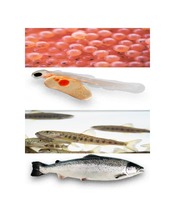| dc.description.abstract | Salmon aquaculture is the fastest growing industry in Norway, contributing to food security and nutrition. The industry ensures social, economic and environmentally sustainable development by utilizing natural resources efficiently. However, this industry consistently encounters challenges; idle capacity, pollution, diseases, parasites and fish escaping, to name a few. The considerably longer production cycle is largely responsible for brewing these challenges. Moreover, these limitations have elevated the concern about the significant economic losses and ecological impacts. With the current technologies, under current regulatory and ecological conditions, despite increasing salmon demand in the global market, room for industrial growth is constrained. This has led to an increase of a significant attention in the area of new technology development and new ways for sustainable expansion. A number of variables determine profitability in aquaculture, including capacity utilization, biological factors, capital investment, operational costs and sales price. Many of the actual outcomes in the aquaculture rely on the efficient usage of MTB (Maximum Total Biomass) limit, which is considered the most scarce and expensive resource for a fish farm production. The current study has undertaken economic analysis to assess the MTB utilization and cost of production in the current production model of a traditional sea-based salmon farm situated in Sognefjorden. The report aims to investigate how the current MTB limit is utilized and how time, information and uncertainty can create incentives or difficulties for improving MTB usage during the “post-smolt” production phase. A shorter production cycle possibly improves production capacity utilization and production turnover to ensures “economies of scale”. Thus, production time is reduced, adopting policies like introducing larger smolt compared to the regular smolt and optimal harvesting weight class. Hence, the shorter production cycle ensures efficient resource utilization, reduce vulnerabilities, higher production volume, lower production costs and improve profitability. | en_US |
